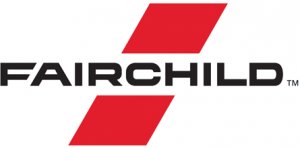 It can be difficult to anticipate workforce trends, and change can lead to a lot of unknowns for organizations. Despite all the unpredictable variables, Fairchild Semiconductor has remained agile by applying the concept of continuous improvement—popular in the manufacturing industry—to human resources management. Matt Record, HR systems program manager, shares how Fairchild has been able to continuously improve how it operates HR, delivers insights to hiring managers, and attracts, engages, and empowers its global talent.
It can be difficult to anticipate workforce trends, and change can lead to a lot of unknowns for organizations. Despite all the unpredictable variables, Fairchild Semiconductor has remained agile by applying the concept of continuous improvement—popular in the manufacturing industry—to human resources management. Matt Record, HR systems program manager, shares how Fairchild has been able to continuously improve how it operates HR, delivers insights to hiring managers, and attracts, engages, and empowers its global talent.
What challenges was Fairchild trying to address when you deployed Workday five years ago?
We had offices in 27 different countries—a massive global footprint including more than 10, 000 employees using multiple languages—and many different HR systems. This made even the simplest of HR tasks very complex. It was cost-prohibitive to upgrade our legacy HR and payroll software and we were stuck with outdated versions, resulting in a poor user experience. We needed something much more modern that could handle multiple regions, be easy for employees and managers to use, and be extendable for years to come. In manufacturing, the emphasis is placed on continuous improvement, and with Workday we saw how we could mirror that approach when it came to HR.
What does continuous improvement mean to Fairchild’s HR organization?
We ask ourselves what we are doing to continually improve our HR organization on an operational level. In a world where everyone is tasked with doing more with less, investing in technologies that improve processes is paramount. In the past year we’ve increased our overall investments in this area and that has really helped us streamline processes, reprioritize our goals, and focus our discussions with the business.
“We’re continuously improving how we attract and engage our employees. A big focus for us this year is making sure employees are proactive about their career development.”
Empowering our management teams is another important area for continuous improvement, and self-service plays a big part in that. Five years ago, that meant ensuring HR managers had access to basic employee information like salary and tenure, but that doesn’t cut it anymore. With Workday Recruiting, which we deployed in July 2015, we’ve evolved to where our managers have a clear picture of what’s required for talent acquisition and development. Where once only certain managers had access to that information, now all hiring managers receive the same level of insight, helping us improve recruiting efforts across the board.
Finally, we’re continuously improving how we attract and engage our employees. A big focus for us this year is making sure our employees are proactive about their career development. With Workday they can upload their job experience from LinkedIn, search for open positions, and apply for a new job directly. This level of transparency encourages personal growth and enables management to locate specific skills, such as an employee who speaks Mandarin, and recommend them for new opportunities on a global scale.
How has your role in HR evolved with the changing workforce over the past five years?
Five years ago, we were moving out of the global financial crisis. Our focus during that time was more about how to survive and reducing costs. Fast forward to present day and the types of activities we are doing now are markedly different because of the way the workforce has changed. Today our team is tasked with questions like, “How do we continue attracting top talent?” and “What kind of survey should we run to get the pulse on employee engagement and happiness?” We believe that long-term investments in people promote a better culture all around, and with Workday helping make what were manual HR tasks more efficient, we have the time to focus on that.
“Employees today expect a modern experience in their workplace. Providing them with technologies that are as easy to use as the personal sites they’re on every day is very indicative of the type of employer you are.”
What are some of the biggest pressures facing HR practitioners today?
Talent acquisition and recruiting have always been challenges, but now social media is a major factor we have to consider. Sites like LinkedIn make it easier to find and recruit great employees, which is a bit of a double-edged sword since those same employees are being actively sought after by other companies. To remain competitive in the talent market, you need people on your HR team who are familiar with all the different social platforms to communicate effectively and draw the right people in.
Employees today also expect a modern experience in their workplace. Providing them with technologies that are as easy to use as the personal sites they’re on every day is very indicative of the type of employer you are. User experience matters and that’s something that Workday does well. I have had colleagues who went to companies that don’t use Workday and they felt they were moving backwards. Everyone wants to be having high-level conversations instead of being stuck doing data entry every day, and our organization is doing exactly that with the help of Workday.
 The Fairchild F8 was an 8-bit microprocessor created by Fairchild Semiconductor. It was introduced in 1975 and was "the world's leading microprocessor in terms of CPU sales" in 1977.
The Fairchild F8 was an 8-bit microprocessor created by Fairchild Semiconductor. It was introduced in 1975 and was "the world's leading microprocessor in terms of CPU sales" in 1977.